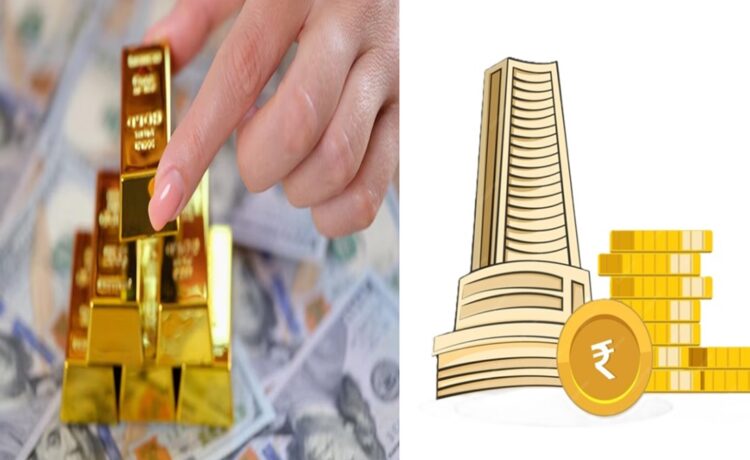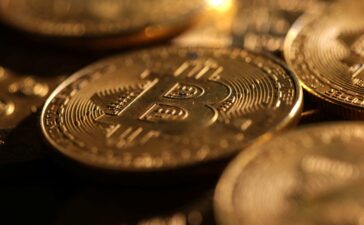Two asset classes — gold and equity — have always been pitted against each other when it comes to comparing returns and weighing pros and cons. In times of volatility in the equity market, investors lean towards gold due to its safe haven status. But the trend shows that gold and equity both have given stellar returns to investors if we compare both these asset classes over one year, three years, five years, 10 years, and 20 years time horizons.
Gold and Sensex locked in race to 75,000 mark
Currently, both gold and equity benchmark Sensex are locked in a race, each vying to reach the coveted 75,000 mark. Gold, which is traditionally a safe haven asset, is trading above Rs 72,500 per 10 grams, while, the BSE
Despite this head-to-head battle between these two investment instruments to reach new heights, both have had contrasting journeys over the past year, the past five years, 10 years and 20 years.
Also Read: Are you 40 and want to build Rs 10 crore retirement fund? Know how much to invest monthly
Gold’s journey over the decades
Gold (24 karat) prices in India
In the following decades, from 1981 to 2000, gold prices saw a moderate but steady rise, climbing from Rs 1,670 in 1981 to Rs 4,400 by 2000. This period underscored gold’s volatility and its evolving correlation with global economic trends. The new millennium, however, saw a big jump in gold prices, with notable gains during the global financial crisis of 2008 and the COVID-19 pandemic in 2020.
By 2020, the price of gold per 10 grams soared to over Rs 48,500, again showing why the precious metal is considered a ‘safe haven’ during economic uncertainties. Gold yielded over 1000% returns to investors over the 20-year period from 2000 to 2020. In post-COVID pandemic times, gold prices have continued to rise, reaching past Rs 65,500 in 2023. This surge can again be attributed to various factors, including global political tensions and market
We are in 2024, and gold prices surged past the Rs 72,800 per 10 grams level last week. However, it was trading at Rs 71,280 per 10 grams in the national capital on Monday, April 8, 2024.
If we look at returns from gold over the last 20 years, it has surged by nearly 1,150%. The precious metal has surged 161% in the last 10 years and 123% in the past 5 years. Over the past one year, the precious metal has given a 17.44% return.
On April 4, gold (24 karat) price in the national capital stood at Rs 72,910 per 10 grams.
Commenting on the recent surge in gold prices, Tapan Patel, Fund manager-Commodities, Tata Asset Management, said, “Gold prices have rallied recently hitting all-time highs from weak macro-economic environment, geopolitical risk and central banks gold buying. We have seen higher investment demand for gold in India through various gold investment instruments.”
BSE Sensex’s journey over the decades: From 1,000 in 1990 to 74,500 in 2024
The Sensex began its journey at 100 in 1979 and took 11 years to reach first 1,000 points in 1990. That translates into an annual compound annual growth rate (CAGR) yield of 23.3%, one of the best rallies for the index recorded till date over a 10-year period.
In February 2006, the Sensex hit a new milestone, reaching the 10,000 level for the first time – a CAGR yield of 15.5% over 16 years.
To reach 20,000 from 10,000, the Sensex took exactly 21 months. It hit the 20,000 mark in October 2007. However, the journey to 30,000 took seven years due to the global financial crisis in 2008-09. It took a little over 4 years up until May 2019 to reach the 40,000 milestone.
In the next 17 months until January 2021, the Sensex went from 40,000 to 50,000. Despite a big drop to around 25,700 in March 2020 due to the COVID-19 pandemic, it bounced back. The benchmark index surged from 50,000 to 60,000 in just eight months, reaching 60,000 in September 2021. The journey could have been shorter, but another COVID-19 wave slowed it down.
The next big milestone of 70,000 was achieved in December 2023. The Sensex climbed to 74,659, a fresh life
If we look at its returns over 20 years, 10 years, 5 years, and 1 year, the Sensex has delivered impressive returns across all horizons. In the last 20 years, the Sensex has given over 1,200% return. Over the last 10 years, it has risen by 233%. The BSE gauge has surged 92% in the past 5 years and over 24% in the last one year.
On the Sensex reaching a new milestone, Suman Bannerjee, CIO, Hedonova, said, “The Sensex’s historic climb to surpass the 74,000 milestone signifies a significant moment in India’s economic narrative.”
The banking sector emerged as the major driving force behind this achievement, underscoring the country’s robust growth trajectory fueled by resilience, innovation, and investor confidence, he added.
“As the Sensex reaches new heights, it showcases India’s economic prowess, serving as a beacon of hope and opportunity for investors and businesses alike, testament to India’s promising future,” Bannerjee opined.
In conclusion, both gold and the Sensex have witnessed remarkable journeys over the decades. As returns indicate, over a 20-year period, gold has surged by 1150%, while the Sensex has seen a 1250% increase – a neck-and-neck competition. Even in the past year, both segments have delivered stellar returns, with the Sensex yielding 24%, slightly outperforming gold at 17%.
















